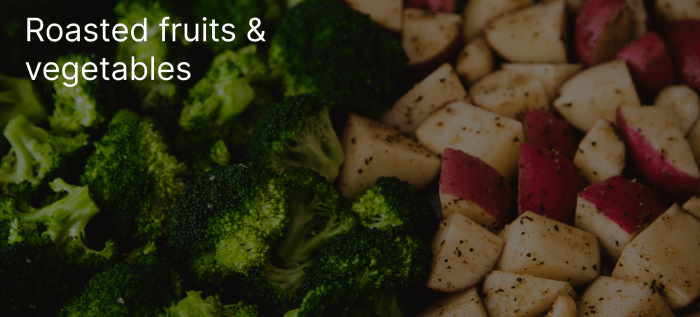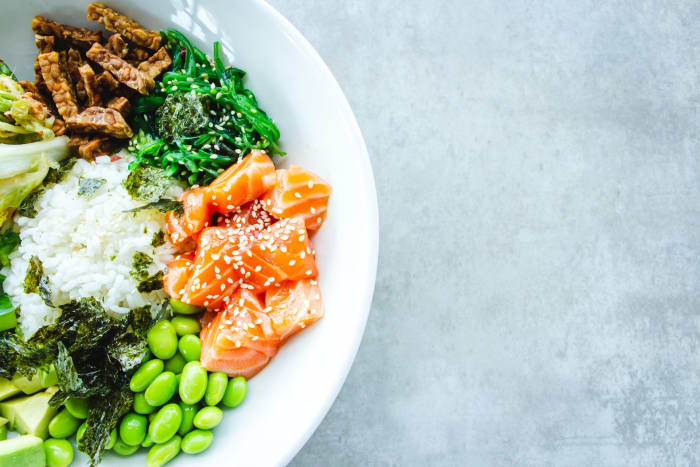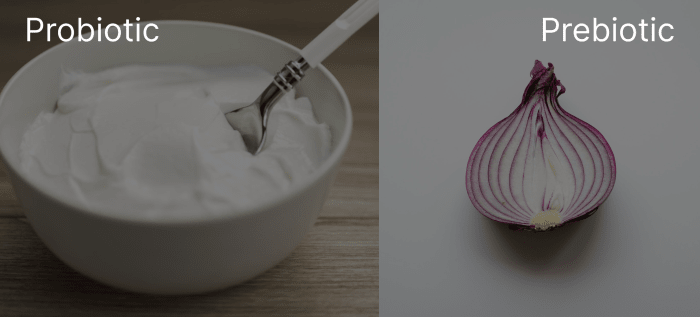Nutrition Trends to Watch Out for in 2023
Explore the tastiest and healthiest nutrition trends of 2023! From plant-based delights to mindful eating secrets, discover how your plate can shape a healthier you and a greener planet.
6,543

In a world where "What's for dinner?" has become a declaration of values, we're here to unravel the delicious mysteries of the hottest nutrition trends of 2023. Whether you're a foodie on a quest for the next big flavor or a wellness warrior seeking the secrets to a long, vibrant life, this blog is your treasure map.
Together, we'll dive into a smorgasbord of trends that promise to tantalize your taste buds, soothe your conscience, and transform your relationship with food. From sustainable suppers to gut-loving goodies, we're about to embark on a gastronomic journey that might just change your life, one mouthwatering bite at a time.
So, grab your fork, your curiosity, and an appetite for adventure. Let's savor the flavors of the future and discover the ingredients that will redefine how we eat, live, and thrive in this deliciously exciting age of nutrition.
1. Plant-Based Eating

The interest in plant-based diets has continued to grow. Plant-based diets focus on whole plant foods like fruits, vegetables, legumes, nuts, and seeds, while reducing or eliminating animal products.
Vegan and vegetarian diets are prominent examples of plant-based eating. Dishes like quinoa and black bean bowls, lentil soup, or roasted vegetable stir-fry are common in plant-based diets.
2. Flexitarian and Reduced Meat Consumption

Many people are adopting a flexitarian approach, which means they eat mostly plant-based foods but occasionally include small amounts of meat or animal products. Reducing meat consumption can have environmental and health benefits.
A flexitarian might have meatless Mondays or opt for a vegetarian meal during the week. Meatless burgers made from plant-based ingredients (e.g., Beyond Meat or Impossible Burger) are popular choices.
3. Gut Health

Gut health is a significant focus in nutrition. Consuming probiotics (good bacteria) and prebiotics (food for probiotics) can help support a healthy gut microbiome, which can positively impact digestion, immunity, and overall health.
Consuming probiotic-rich foods like yogurt, kefir, sauerkraut, and kimchi, along with prebiotic foods such as garlic, onions, and asparagus, can support gut health.
4. Functional Foods

Functional foods are those that offer specific health benefits beyond basic nutrition. Examples include foods fortified with vitamins and minerals or those containing bioactive compounds like antioxidants to provide specific health benefits.
Fortified cereals, calcium-fortified orange juice, and omega-3-rich eggs are functional food examples. Additionally, foods high in antioxidants like blueberries and green tea are considered functional.
5. Mindful Eating

Mindful eating involves being fully present during meals, paying attention to hunger and fullness cues, and savoring the flavors and textures of food. It promotes a healthier relationship with food and can help with portion control and weight management.
To practice mindful eating, avoid distractions like TV or smartphones while eating and take the time to chew food thoroughly, savoring each bite.
6. Sustainable and Local Food

Many people are increasingly conscious of the environmental impact of their food choices. Sustainable and locally sourced foods are gaining popularity as a way to reduce carbon footprints.
Buying locally grown fruits and vegetables from farmers' markets, choosing sustainably caught seafood, and reducing food waste are all part of sustainable and local food practices.
7. Personalized Nutrition

Personalized nutrition uses genetic information, health data, and dietary preferences to create tailored diet plans.
DNA testing services like 23andMe or Nutrigenomix provide insights into individual genetic predispositions to certain dietary needs, such as lactose intolerance or sensitivity to specific nutrients.
8. Low Sugar and Natural Sweeteners

Reducing sugar intake remains a priority for many people.
Natural sweeteners like stevia, monk fruit extract, and erythritol can replace refined sugars in recipes. Additionally, unsweetened applesauce can be used to sweeten baked goods naturally.
9. Non-Alcoholic Beverages

The market for non-alcoholic beverages, such as alcohol-free spirits, mocktails, and functional drinks, is growing as people seek healthier alternatives to traditional alcoholic beverages.
Non-alcoholic beers, alcohol-free spirits (e.g., Seedlip), and mocktails made with fresh fruit juices and herbs are gaining popularity.
10. Ancient Grains and Gluten Alternatives

Ancient grains are traditional grains that have gained attention due to their nutritional value, and gluten alternatives cater to individuals with gluten sensitivities.
Quinoa, amaranth, and teff are examples of ancient grains. Gluten-free alternatives include products made from rice flour, almond flour, or chickpea flour, such as gluten-free pasta or almond flour pancakes.
Conclusion
In the ever-changing world of nutrition, one thing is certain: our food choices have a profound impact. As we bid adieu to these intriguing trends of 2023, remember that your plate is a canvas of possibilities.
So, go ahead, embrace the plant-based adventures, savor every mindful bite, and indulge in ancient grains' wholesome goodness. But amidst the trends, never forget the simple joy of sharing a meal.
In each choice you make, you hold the power to nurture your health and contribute to a healthier planet. Here's to a future where your plate reflects not just your taste but your values too.
Keep exploring, keep tasting, and above all, keep nourishing your best self. Cheers to a deliciously vibrant journey ahead!




